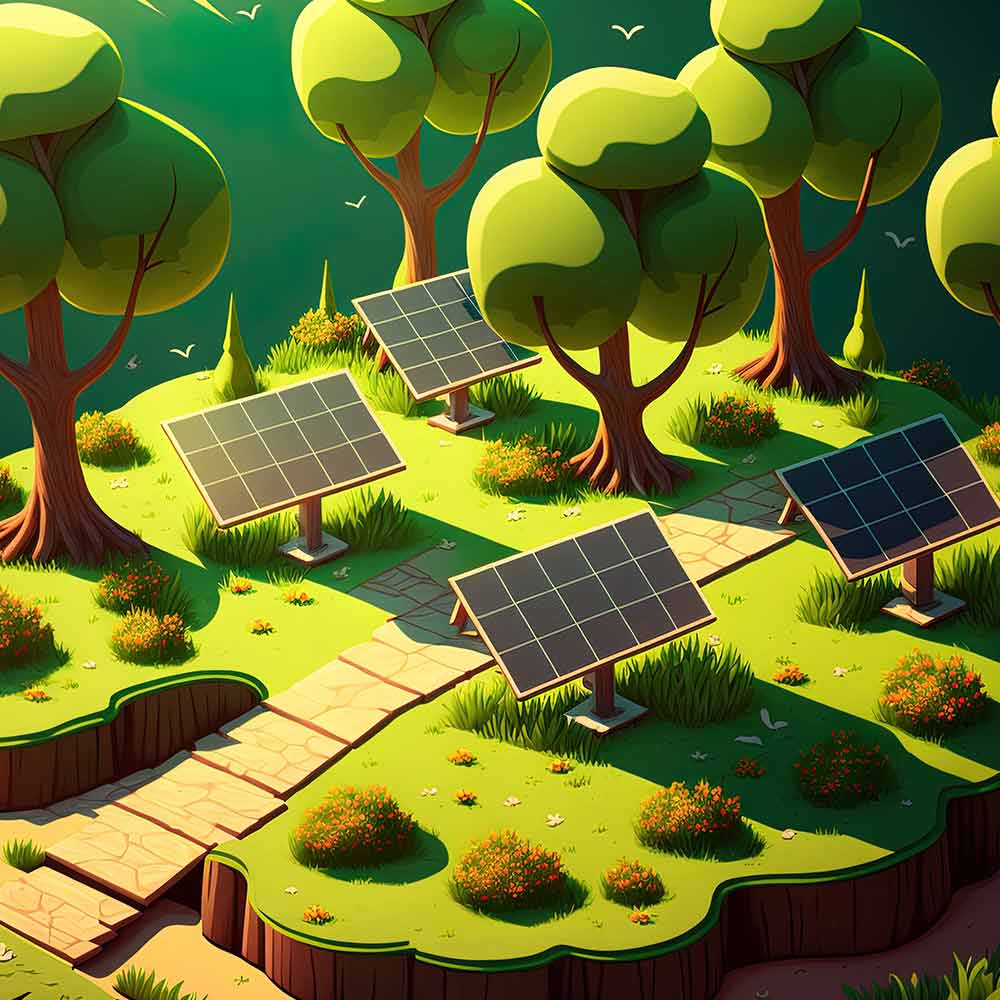Plants Could Help Improve the Efficiency of Solar Panels

After oxygen, silicon is the most abundant element in the earth’s crust. Sand, for example, is composed mainly of it. It is also the material that has driven the microprocessor revolution and a key element in green power production, as it is the basis for most photovoltaic panels. However, silicon is not the only option for developing computing technologies or producing solar energy.
Lahari Saha, a researcher at the University of Maryland in the USA, believes there are other strategies for achieving more efficient solar panels. In her case, it is a matter of using elements from the greatest experts in processing sunlight: plants and the molecules with which they carry out photosynthesis. Today, photovoltaic panels offer a maximum efficiency of around 20 %. The challenge is to increase this figure and to do so in a sustainable manner.
Improving the efficiency of solar panels with chlorophyll and other moleculese
The findings of Saha’s research were presented at the 67th Biophysical Society Meeting in San Diego, California, as part of his paper “Fluorophore-induced plasmonic current for solar energy harvesting.“ Her project, which is still preliminary, focuses on fluorescence, specifically on molecules known as fluorophores. That is, they can absorb energy at one wavelength and emit it at a longer wavelength but with lower energy.
“Any sort of molecule that fluoresces, gives off light. If we excite the fluorophore, it can transfer its energy to metal nanoparticles, and if the particles are close enough to each other, they will knock off electrons and generate current,” explained Saha. This principle can be extrapolated to other non-fluorescent particles with a high light absorption capacity, such as chlorophyll or lutein. In addition to improving the panels’ efficiency, these molecules’ use will facilitate their recycling.

Another of the researcher’s major goals is the development of solar panels with a smaller footprint since the same renewable energy can be generated with a smaller size. As renewable energies become increasingly important, finding ways to optimize the physical space they occupy will be necessary. While wind energy opts for offshore installations, photovoltaics is turning to floating facilities in water reservoirs. The new “vegetable” panels could help obtain more energy per square meter.
The quest for biophotovoltaic energy
Of course, silicon has a long life ahead of it, as these developments based on plant molecules have not yet reached commercial or industrial maturity. However, research in biophotovoltaics is opening up exciting possibilities, as in the case of these solar panels based on living bacteria. And there are even more radical approaches. One of the latest research projects has explored the power-generating potential of plants, specifically succulents.
In a paper recently published in the scientific journal ACS Applied Materials & Interfaces, a team of researchers has raised the possibility of a living “biosolar cell” based on photosynthesis. All living cells move electrons as part of their biological processes. In the case of plants, photosynthesis produces a flow of electrons that can be harnessed to power an external circuit.
In this case, scientists have concentrated their efforts on a succulent plant known as the Ice Plant. As part of their research, they inserted an iron anode and a platinum cathode into one of its leaves and managed to generate a current of 0.28 v. Although this is a small voltage, lower than that of an alkaline battery, the current was maintained throughout the day and, technically, could be increased by using a network of plants.
Another example of biophotovoltaics is using an algae colony to power a microprocessor. In the experiment, researchers at the University of Cambridge used blue-green algae, also known as cyanobacteria, capable of photosynthesis. Their system, exposed to light, managed to power an ARM Cortex-M0+ microprocessor for six months. The current generated is small but sufficient to power IoT devices in remote areas.
If you want to know more about the potential of microorganisms to produce and store energy, you can check out this article about a new generation of biobatteries that can deliver power for weeks by leveraging the interaction of three types of bacteria.
Source:

